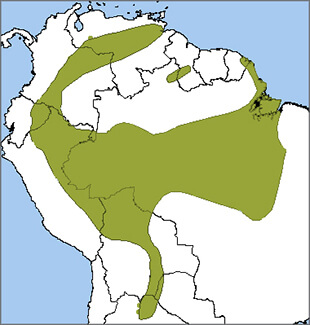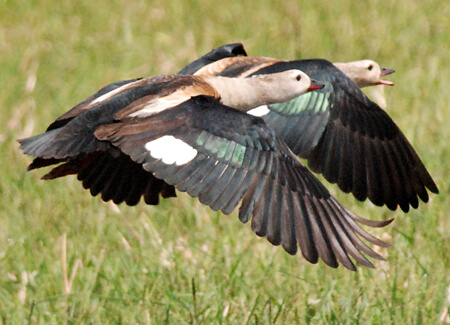 This handsome goose is named after the mighty Orinoco River of Venezuela and Colombia, one of the longest rivers in South America. In spite of that, the Orinoco Goose is rarely seen afloat. These geese prefer to walk, foraging on their long legs along forest-covered riverbanks and the margins of large wetlands, damp clearings, and watery savannas.
This handsome goose is named after the mighty Orinoco River of Venezuela and Colombia, one of the longest rivers in South America. In spite of that, the Orinoco Goose is rarely seen afloat. These geese prefer to walk, foraging on their long legs along forest-covered riverbanks and the margins of large wetlands, damp clearings, and watery savannas.
Although not declining nearly as rapidly as the Hawaiian Goose, numbers of the once-abundant Orinoco Goose are reduced in many areas due to overhunting and habitat loss.
Orinoco Goose: Not a Goose
Although Orinoco Geese are technically shelducks (a group of mid-sized waterfowl), they are commonly called “geese” because of their heavy flight style. They often roost in tree branches. Females nest in hollow tree cavities, but they are chiefly terrestrial in their habits, only flying or swimming if hard-pressed.
Once considered a sedentary species, only moving between feeding and roosting sites, recent studies in Peru and Brazil have shown that some populations do migrate. The birds breed along rainforest rivers during the dry season and fly south to the Beni savannas of Bolivia during the rainy season.
Different populations of the Orinoco Goose differ in migration strategies, with some birds migrating hundreds of miles to breeding areas.
Sign up for ABC's eNews to learn how you can help protect birds
Social Shelduck
This highly social goose can often be seen in pairs or family groups. They are territorial during their nesting season, with the male aggressively defending his mate and territory against intruders. Courtship displays include ruffled feathers, wing-lifting and repeated whistling vocalizations as well social preening.

Orinoco Geese by Daniel J. Lebbin
Pair-bonding is strong in this species, and mates remain together throughout the year for several years. The male helps guard the chicks after they hatch, and the young often stay with their parents a year or more after hatching.
The Bird's Bolivian Stronghold
One stronghold for the Orinoco Goose occurs in Beni, Bolivia, where ABC's partner Asociación Armonía protects habitat and has installed artificial nest boxes at the Barba Azul Nature Reserve. (See a short video of the birds at the Barba Azul reserve.)
The largest known congregations of Blue-throated Macaws in the world occur at this reserve, along with other residents such as Greater Rheas and Streamer-tailed Tyrants. Migratory Bobolinks and Buff-breasted Sandpipers also use Barba Azul as a stop along their long migrations.
With ABC support, Armonía has built a research station that provides housing for visitors. To visit, please contact BirdBolivia or find more information at ConservationBirding.org.
Donate to support ABC's conservation mission!



















































